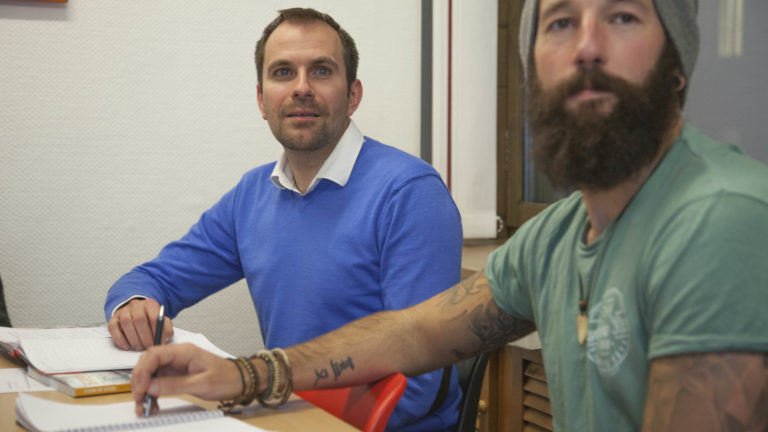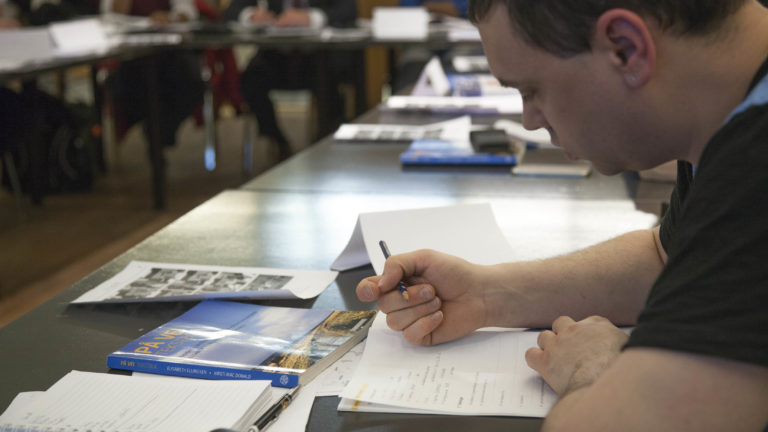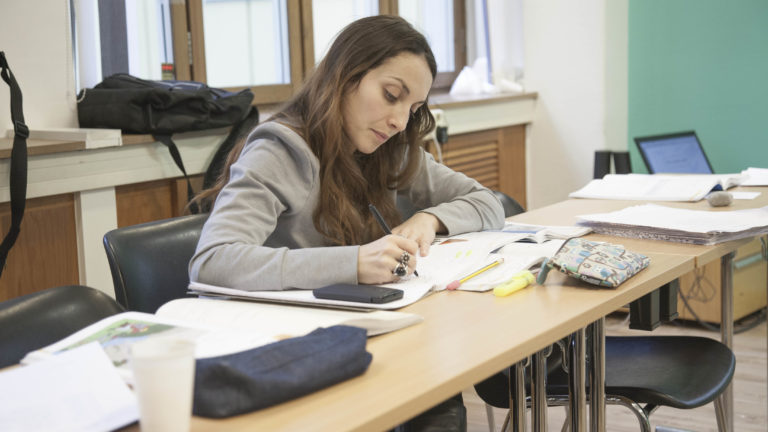Russefeiring: Explained
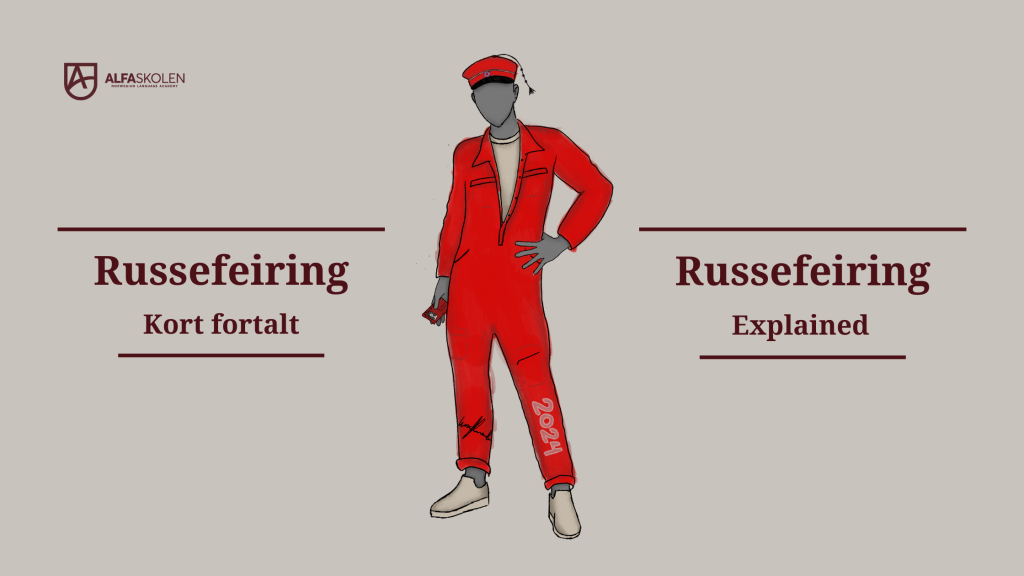
As warmer times approach, one of Norway’s most visible signs of spring emerges: the Russefeiring (Russ celebration). If you’re new to Norway, you might start wondering: Who are all these teenagers in red pants? What does it mean to be a “russ” in Norway? What are russeknuter, russedress, russegruppe, and russebuss? And what does Russefeiring look like today?
As mentioned, Russefeiring takes place in spring, specifically from the beginning of April to the 17th of May. From April, residents in Norway can expect a bit more noise on weekends, with the russ celebrating the end of their schooling! Planned for up to three years, this month-long celebration concludes with a final party on the National Day, with russ driving “russe-buss” -cars and -vans in the 17th of May parade, and where russedress and bunad go hand in hand as national costumes. If you’re looking to enjoy the warmer times in Oslo, you can participate in Alfaskolen’s summer courses! We also have language cafés where we talk about Norway’s National Day on the 17th of May.
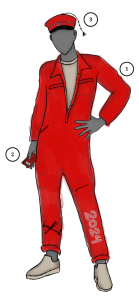
Who are the Teenagers in Red Pants?
A russ is a student in their final year of upper secondary school. Back in 1905, the russefeiring was only for those who secured university places, but now it is available to all at the last step of adolescence. (See here for images of the history of Russefeiring!)
Norwegian Russedress: The National Costume of the Youth
Russ stand out in the crowd with a (1) russedress (russ suit), often decorated with their name, the name of their russegruppe, and various symbols. Some russ even have artists paint on the back of their russedress. We recommend searching for “russedress maling” (russ suit painting) to see all the different motifs a russ chooses for their russedress! A proud russ often wears their dress every day during Russetiden.
The russedress can be in various colors depending on type of subjects the student takes at school. The most common colors today are red and blue. Rødrussen (red russ) take general subjects (math, biology, chemistry, history, Norwegian, etc.), preparing them to study at a university. Blårussen (blue russ) also take general subjects, but include subjects in economics, business, and service. Other less common colors are green and black. Grønnruss (green russ) are more common in rural areas than in cities, as these students study agriculture (future farmers). Svartruss (black russ) take vocational subjects (e.g., construction and electrical).

Last but not least: pink russedress for kindergarten children! Pink russ show how far the russe tradition has spread in Norwegian culture, as even the smallest children know what this is!
Norwegian Russekort: Five Seconds of Fame
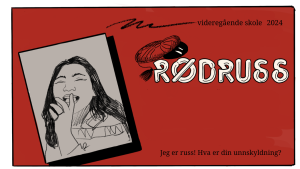
A significant reason for the popularity of russefeiring among children and young people is the (2) russekort (russ card). During russetiden, a russekort is created for each russ, featuring the russ’s name, what color russ they are, which school they go to, and often a cheeky joke. Much like asking for an autograph from celebrities, many children collect russekort during russetiden, though they are probably too young to understand the jokes written by the russ.
Norwegian Russelue: Challenge Accepted
Along with the russedress, a (3) russelue (russ hat) with a long string is also used. On this string, russ document whether they have completed various challenges by tying russeknuter (russ knots) in the string. The goal is to get as many knots as possible before Russetiden is over. Most challenges rewarded with a russeknute are related to sex and heavy drinking, in celebration of the upcoming freedom following their final exams. Here are some examples of other types of challenges:

- Eat a cheeseburger in just two bites
- Sit under a writing desk for an entire school day
- Crawl through the entire Karl Johan’s gate (Oslo)
- Attend all school hours during russetiden (own knot with a birthday candle, as the Norwegian expression “skolelys” for a bright student).
Russegruppen: A brand
Being a russ is rarely a solo experience, as you are part of a russegruppe (russ group), which could be the friend group or sports team of the russ. The russegruppe has its own unique name and can also have its own russelåt (russ song) and logo that belong to the group and their russebuss (russ bus).
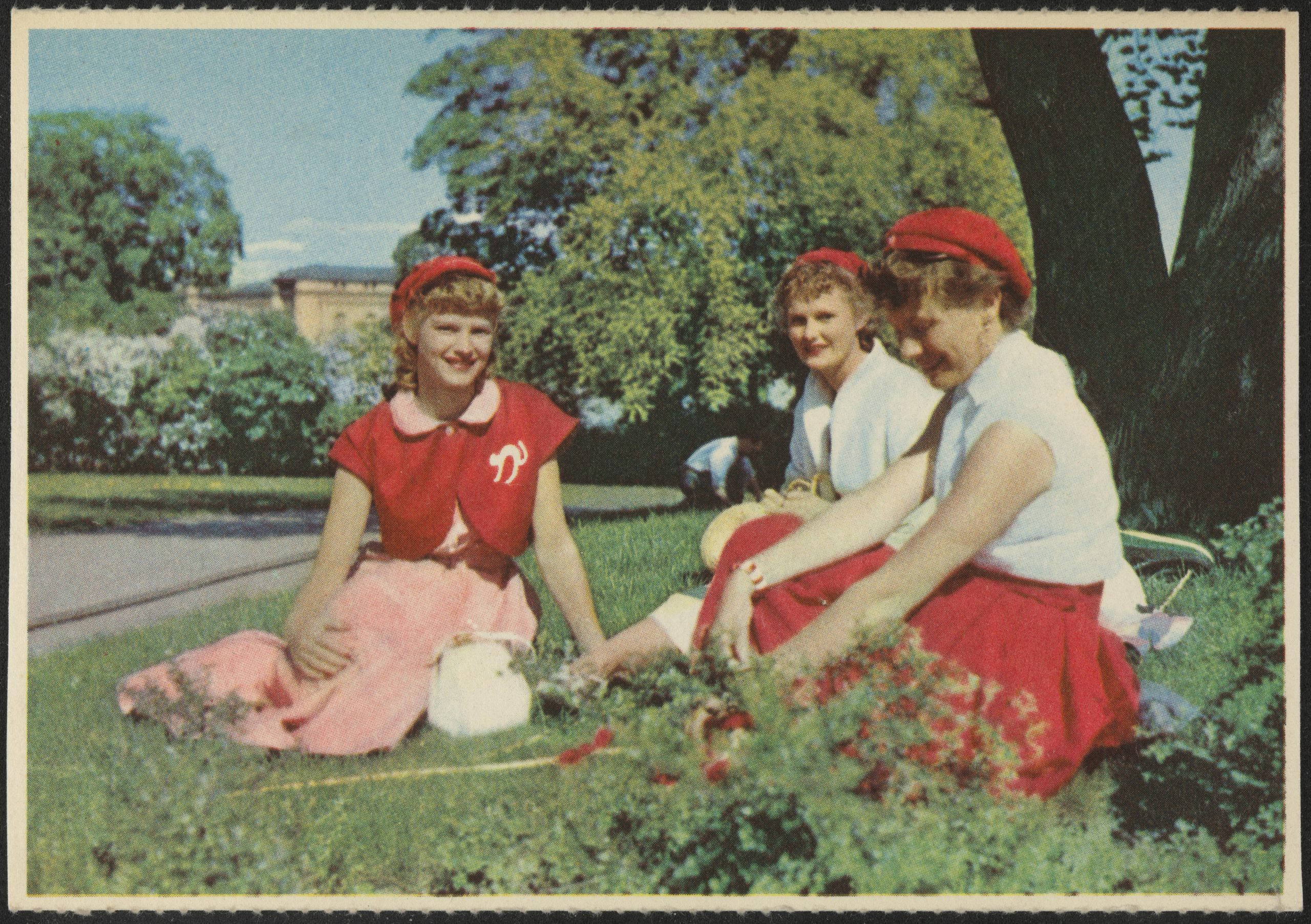
Russegruppen: An investment
In 2018, russ in Oslo and Akershus were expected to spend around 27,000 NOK per person during the celebration. By 2024, it is expected that some russegrupper will spend several millions of NOKS on russedrakt, russebuss, russetreff, and alcohol for all the parties. Although there are russ across Norway who save where they can, there are now significant differences between those who cannot afford to spend much and those who can. In some cases, there are now children in junior high school who wear safety pins to signal to other students that they have high-income parents, and therefore they are good to have in a russegruppe when they start upper secondary school.
Russegruppen: Solidarity
With a significant investment of money and – more importantly – time in russetiden, it’s not surprising that some members of a russegruppe develop tight bonds and lifelong friendships. During russetiden, the russegruppe will spend a lot of time together, as planning for russetiden often starts in the first year of upper secondary school! Over three years, they will party together and save up money for rolling on a russebuss. The size of the russegruppe can vary, but some groups have as many as 20 to 35 members. Although you should not be a russ alone, there has unfortunately been a big problem with exclusion and loneliness during russetiden. In recent years, measures have been taken to ensure that all students are included in a russegruppe so that no one has to walk alone.
Russefeiring: Party Venue on Wheels
While it used to be common for russ to walk in the 17th of May parade, fewer and fewer of the russ in cities are walking to the music of the marching band. In the 1950s, it became common for russegrupper to have their own russebil (russ car) in the parade. With better economy in the 1980s, more could invest in a russebuss or van. While cars and mini-vans are still used, today many russegrupper come together to buy a bus, decorate it, and install technical systems for sound and light. Some buses also have their own DJ stage mounted on the bus! During russetiden, one bus will rise above the rest and win the prize of being the best bus™️, as picked out at a russetreff.
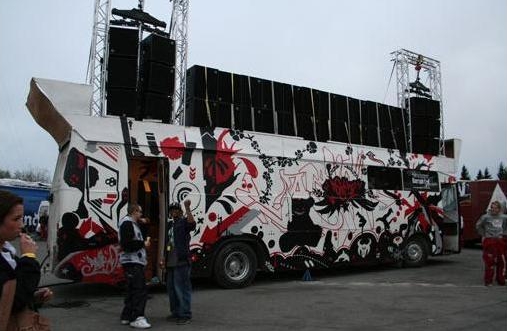
Check out the speakers on this beast! This bus is from 2006, a year considered part of a golden age for russebusses and a sign of how far one is willing to go to win the prize for the best bus. Having gigantic speakers on the roof of a bus is no longer allowed for russebusses, as it can obviously be very dangerous in traffic. Nowadays, russ instead arrange for a hatch in the roof that can be opened to unleash deep bass and russ songs.
Russefeiring: A gathering in Red and Blue
A bus like the one shown above could have won a major prize at a russetreff in 2006. Russetreff (a meetup of russ) is like a festival where thousands of russ gather from all over the country to compare russebusses, boast about russegruppe names, listen to russelåter, and party all day long. Russetreff are held in several cities across the country, but some are larger and more famous than others. A well-known russetreff is Landstreffet in Stavanger, held from May 3 to May 5 now in 2024. We recommend checking out the Instagram account “landstreffet stavanger” for pictures from this year’s russetreff!
We hope this post has given you a better overview of the Norwegian Russefeiring! For those of you joining in the celebration on the 17th of May, you can look forward to seeing russ around every corner.
Written by Lisa Ovidia Knardal / course consultant
Tags:


